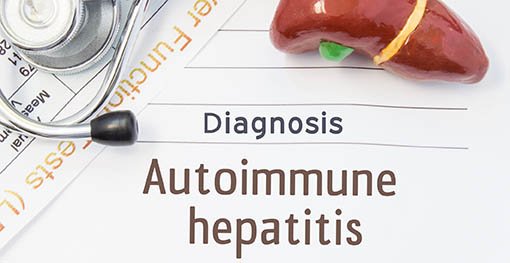
Autoimmune hepatitis diagnosis. Anatomical 3D model of human liver is near stethoscope, results of laboratory tests of liver function and printed on notepad diagnosis of Autoimmune hepatitis
Autoimmune hepatitis (AIH) is on the
rise but remains under-diagnosed and under-recognised, the 2019 ISG Winter
Meeting heard
Irish-born AIH
expert Prof Dermot Gleeson, Professor of Hepatology at Sheffield Teaching
Hospitals, UK, gave a tour de force update on AIH, a
corticosteroid-responsive liver disease arising consequent to immunogenetic and
environmental risk factors, which can be difficult to correctly diagnose and
treat.
“AIH is
still in the 20th Century in terms of treatment and randomised controlled
trials,” he commented.
Core
diagnostic AIH features include the patient having an ‘active’ hepatitis,
negative virology, typically a raised globulin or IgG, antibody titers, and a
high incidence of rosettes and emperipolesis in histology. It “is a disease of
women” and has a peak of around 60 years, not younger as previously believed,
Prof Gleeson said.
Misdiagnosis/under-diagnosis
is common, especially with the simplified AIH diagnostic criteria.
“We miss
about 30-to-40 per cent of probable AIH by the more expansive 1999 criteria,
and this is steroid-responsive disease,” he said.
Prof
Gleeson stated it is accepted that a diagnostic biopsy is generally needed.
Differential diagnoses include Wilson’s disease, hepatitis E, and non-alcoholic
fatty liver disease or drug-induced liver injury. If uncertainty still exists
around the diagnosis of AIH, Prof Gleeson recommended excluding all viruses and
precipitants, checking soluble liver antigen antibody, HLA type, and carrying
out a steroid trial; “if there is no response, then AIH is less likely”.
AIH is on
the rise, but remains under-recognised, according to Prof Gleeson.
“This
disease is becoming commoner,” he said.
“The
prevalence is about 23 per 100,000, which means that if you have a catchment
area of 250,000, you should have 60 patients. If you have a lot less than that,
you’d have to wonder if you are under-diagnosing AIH.”
Quoting
familial risk data on AIH, he said, while there is an increased genetic risk,
it is still quite small overall.
“The
absolute risk is very low… even for a twin, the absolute risk is one-in-77,”
Prof Gleeson said.
The clinical course of AIH reflects relapsing and
remitting, hepatocyte-targeted immunologic damage, which is countered by
reparative responses to cell injury, with cirrhosis occurring in 12-to-20 per
cent of patients at 10 years. Appropriate and timely immunosuppressive therapy
can drive the disease into remission, albeit with inevitable side-effects, and
relapse is frequent (50-to-70 per cent in one year if treatment is stopped).
“It sums everything up with regards to AIH that we are still basing standard
treatment on a trial published almost 50 years ago — a Mayo Clinic study that
showed high-dose prednisolone or combination lower-dose prednisolone plus
azathioprine led to higher clinical, biochemical and histological remission
rates compared to azathioprine or placebo. Importantly, there was no difference
between azathioprine or placebo, so azathioprine as an induction treatment is
useless. It’s fine for maintenance, but it is useless on its own to induce
remission.”
While
steroids are generally very necessary, Prof Gleeson also cautioned about
dosages and side-effect risks, including diabetes development and higher
mortality rates, “so please be careful with high-dose steroids”. For AIH
patients who are intolerant of steroids, budesonide is the standard choice, “though
it is not to be used in cirrhosis”, while for those intolerant of azathioprine,
mycophenolate (though not in pregnancy) can be used, he said. Tacrolimus also
has good results as a second-line drug.
Summarising
what is needed to improve outcomes in AIH, Prof Gleeson said dedicated
consultants and more specialist nurse involvement are needed, as are better
short-term surrogate markers of outcomes, non-invasive fibrosis monitoring, a
better focus on patient perspectives, more audit, and cancer screening and
vascular risk factor stratifying.
Speaking
to the Medical
Independent,
Prof Gleeson said doctors “need to listen to AIH patients more”.
“These people have a bad quality-of-life. They take
these drugs that give them side-effects and I don’t think we have paid enough
attention to that. There has been a kind of complacency about treatment of AIH
over the last seven decades really, since the advances of the 1970s, and it has
been kind of static since then.
“There are various reasons why it has been difficult to
develop drugs and to compare them — we lack markers of outcomes. It is only in
the last decade that we have realised that the outcome isn’t actually as good
as we thought… ”
He agreed that
there is not enough attention and awareness about AIH compared to hepatitis C,
and that compared to 25 years ago, “now AIH is the worse one to get.”





Leave a Reply
You must be logged in to post a comment.